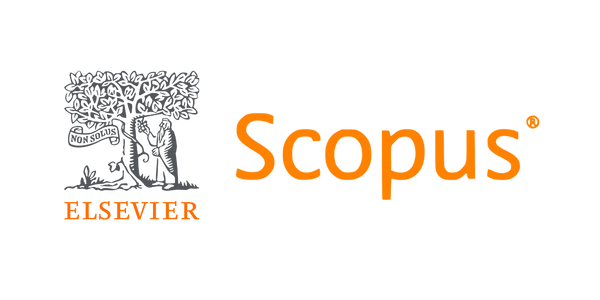Geometric application of a viscosity approximation- type iterative method to the generation the fractals as Julia and Mandelbrot Sets for complex function
Keywords:
Algorithms, Escape criteria, Iterative methods, Julia sets, Mandelbrot setsAbstract
This work explores an application of novel fractal patterns, specifically Julia and Mandelbrot sets, generated by a modified class of complex function in which the traditional constant term is replaced with a logarithmic function. Utilizing a viscosity approximation-type iterative method, we develop escape criteria that enhance existing algorithms, thereby enabling the precise visualization of intricate fractal structures as Julia and Mandelbrot sets. Numerical experiments in MATLAB reveal that varying the input parameters induces significant dynamic transformations in the fractals’ morphol-
ogy. We believe that the insights gained from this study will inspire and motivate researchers and enthusiasts with a deep interest in fractal geometry.
References
N. Adhikari and W. Sintunavarat, A novel investigation of quaternion Julia and Mandelbrot sets using the viscosity iterative approach, Results in Control and Optimization 18 (2025), 100525, https://doi.org/10.1016/j.rico.2025.100525.
I. Ahmad, M. Sajid and R. Ahmad, Julia sets of transcendental functions via a viscosity approximation-type iterative method with s-convexity, Stat., Optim. Inf. Comput., Vol. 12, September 2024, pp. 1553–1572, https://doi.org/10.19139/soic-2310-5070-1918.
S. Antal, A. Tomar, D.J. Parjapati and M. Sajid, Fractals as Julia sets of complex sine function via fixed point iterations, Fractal Fract., 5, (2021), 1-17, https://doi.org/10.3390/fractalfract5040272.
R. Babar and W. Sintunavarat, On generation of Julia sets, Mandelbrot sets and biomorphs via a modification of the viscosity approximation method, Results in Control and Optimization 18 (2025), 100516, https://doi.org/10.1016/j.rico.2025.100516.
A. Husain, M. N. Nanda, M. S. Chowdary, M. Sajid, Fractals: An Eclectic Survey, Part-I, Fractal Fract., 6 (89), (2022), https://doi.org/10.3390/fractalfract6020089.
L. Jolaoso, S. Khan and K. Aremu, Dynamics of RK iteration and basic family of iterations for polynomiography, Mathematics , 10 (18), (2022), 3324, http://dx.doi.org/10.3390/math10183324.
G. Julia, Memoire sur l’iteration des fonctions rationnelles, J. Math. Pures Appl., 8, (1918), 47-245.
S. Kumari, K. Gdawiec, A. Nandal, M. Postolache and R. Chugh, A novel approach to generate Mandelbrot sets, Julia sets and biomorphs via viscosity approximation method, Chaos Solit. Fractals, 163, (2022), 112-140, http://dx.doi.org/10.1016/j.chaos.2022.112540.
S. Kumari, K. Gdawiec, A. Nandal, N. Kumar and R. Chugh, On the viscosity approximation type iterative method and its non-linear behavior in the generation of Mandelbrot and Julia sets, Numer. Algorithms, vol. 2023, 2023.
Y. C. Kwun, M. Tanveer, W. Nazeer, K. Gdawiec, and S. M. Kang, Mandelbrot and Julia sets via Jungck-CR iteration with s-convexity, IEEE Access, 7, (2019), 12167–12176.
P. Maing ́e: The viscosity approximation process for quasi-nonexpansive mappings in Hilbert spaces, Comput. Math. with Appl., 59(1), (2010), 74–79, https://doi.org/10.1016/j.camwa.2009.09.003
A. Maudafi, Viscosity approximation methods for fixed-points problems, J. Math. Anal. Appl. 2000, 241, 46–55.
P. Muthukumar, P. Balasubramaniam, Feedback synchronization of the fractional order reverse butterfly-shaped chaotic system and its application to digital cryptography, Nonlinear Dyn., 74, (2013), 1169-1181, https://doi.org/10.1007/s11071-013-1032-3
K. Nakamura, Iterated inversion system: An algorithm for efficiently visualizing Kleinian groups and extending the possibilities of fractal art, J. Math. Arts, 15, (2021), 106-136, https://doi.org/10.1080/17513472.2021.1943998.
A. Nandal, R. Chugh and M. Postolache,Iteration process for fixed point problems and zero of maximal monotone operators, Symmetry, 11 (5), pp. 655, 2019.
P. C. Ouyang, K. W. Chung, A. Nicolas and K. Gdawiec, Self-similar fractal drawings inspired by M. C. Escher’s print square limit, ACM Trans. Graphic., 40, (2021), 1-34, https://doi.org/10.1145/3456298.
W. Phuengrattana and S. Suantai, On the rate of convergence of Mann, Ishikawa, Noor and SP-iterations for continuous functions on an arbitrary interval, J. Comput. Appl. Math., 235 (9), (2011), 3006-3014.
S. Rawat, D.J. Prajapati, A. Tomar and K. Gdawiec, Generation of Mandelbrot and Julia sets for generalized rational maps using SP-iteration process equipped with s-convexity, Math. Comput. Simul., 220, (2024), 148-169.
A. A. Shahid, W. Nazeer and K. Gdawiec, The Picard-Mann iteration with s-convexity in the generation of Mandelbrot and Julia sets, Monatsh. Math., 195, (2021), 565-584, https://doi.org/10.1007/s00605-021-01591-z.
M. Tanveer, W. Nazeer and K. Gdawiec, New escape criteria for complex fractals generation in Jungck-CR orbit, Indian J. Pure Appl. Math., 51, (2020), 1285-1303, https://doi.org/10.1007/s13226-020-0466-9.
G. I. Usurelu, A. Bejenaru and M. Postolache, Newton-like methods and polynomiographic visualization of modified Thakur processes, Int. J. Comput. Math., 98, (2021), 1049-1068, https://doi.org/10.1080/00207160.2020.1802017.
Downloads
Published
How to Cite
Issue
Section
License
Copyright (c) 2025 Results in Nonlinear Analysis

This work is licensed under a Creative Commons Attribution 4.0 International License.



